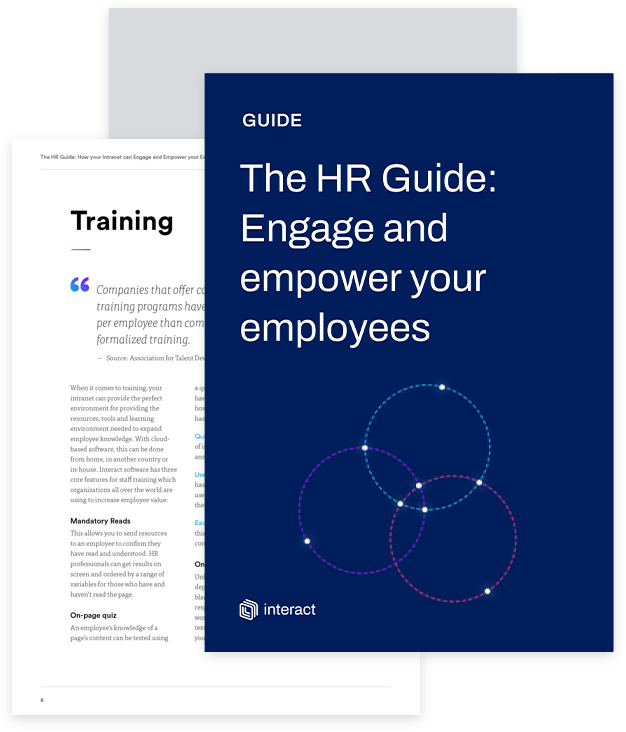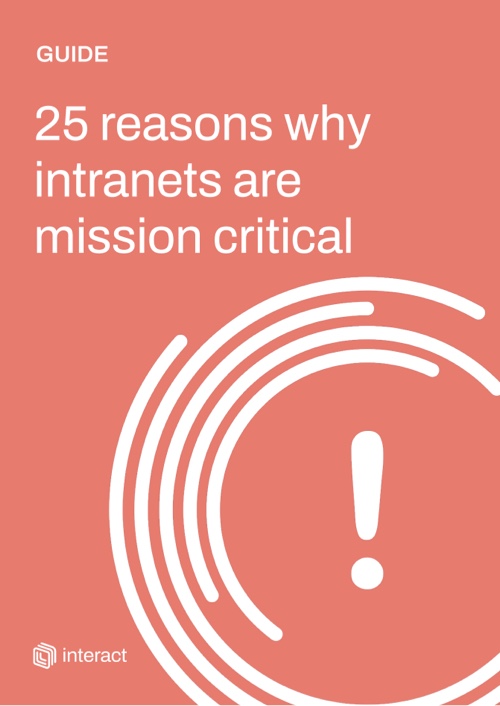Businesses face a critical moment right now. With organizations undoubtedly altered since the beginning of the year, employee engagement is on a knife-edge. Discover the benefits of an employee engagement survey and learn how one can help you work out what your workforce needs to thrive.
While we approach a new normal with schools reopening and employees returning to the workplace, we find ourselves in a very different environment to the one we were in at the beginning of this year. A world-changing event doesn’t happen often, but when it does, it can leave everything we know as familiar in disarray.
With employees spending a third of their life working, it’s important to remind ourselves of the duty of care our organizations have over our people. As leaders, we need to help our people to readjust and reduce any fears, alienation, or concerns about returning to the workplace. We need to reassure them of their safety, now and in the future.
What is an engagement survey?

An employee engagement survey is a questionnaire sent to every employee within an organization to determine their thoughts and feelings on one or more subjects. It’s beneficial for both employer and employee: the former receives valuable feedback; the latter can be frank about specific topics.
Engagement surveys are not to be confused with pulse surveys. Pulse surveys are quickfire questions on an ad hoc basis to give real-time responses on one particular issue. On the other hand, engagement surveys can be quite lengthy, requiring focus and time to answer a number of questions on a range of topics. Because of the time they take, they’re more likely to be annual, while pulse surveys, taking less than a minute to complete, can afford to be a lot more regular.
But what is it about ’employee engagement’ that should make it the subject of such intense focus? In order for the relationship between individual and organization to not only work but flourish, employee engagement must be seen as an ongoing priority. As Culture Amp explains:
“Employee engagement represents the levels of enthusiasm and connection employees have with their organization. It’s a measure of how motivated people are to put in extra effort for their organization, and a sign of how committed they are to staying there. Importantly, employee engagement is an outcome that depends on the actions of an organization, particularly the actions driven by leadership, managers, and people teams.”
With the help of employee engagement surveys, the management team can work out the level of engagement in their workforce and organize the various solutions to remedy the situation. In present circumstances, with the workers dealing with the disorder of recent world events, it’s advantageous to carry out an employee engagement survey. As your employees return to the office, or work out more permanent ways of working, it’s time to check in, get their take on things and form a fresh strategy for the new normal.
Why we need an employee engagement survey

Businesses are at a critical juncture right now. The relaxing of restrictions and the return of employees to the workplace do not lessen the duty of care that the organization has for its people. Now more than ever, businesses need to be more mindful that they continue to do everything in their power to protect their workforce. But with this also comes the need to get things ‘back to normal’, to try and outsmart the current slump and motivate their employees.
The teams of people returning to the workplace will no doubt have a mixture of emotions. Exhausted, disillusioned, fearful, apprehensive – some of their colleagues may have been made redundant, others will have struggled mentally and emotionally through lockdown. Their workplace is a very different one to the one they left. But this time away will also have given them time to think about their role, and their own aims and ambitions. Are they really achieving what they set out to do? Are they happy in their work? Are they fulfilled? Coming back, the collective mindset has been adjusted. It’s at this very delicate time, that we, as business leaders, have to act.
Employee engagement surveys are integral right now. These should be deployed in times of change to get raw but necessary feedback from your people. Using software that ensures anonymity, employees should be invited to share their thoughts and feelings about all aspects of the business – from their views on senior management to whether they support the organization’s core values. A large number of your workforce will already have these opinions fully formed – now is your opportunity to let them share them.
The benefits of an employee engagement survey

The benefits of an employee engagement survey are manifold. For employees, they show that:
Top-level are all ears: these surveys show that senior-level are actively listening to the workforce. Surveys take a considerable amount of effort to create, collate, and work from, so they are rarely ever an empty gesture.
Opinions are valued: While there may be a hierarchical structure in place, the best organizations know that by valuing the thoughts and feelings of the majority goes some way in creating a system that works for everyone.
An always improving mindset: No organization is perfect, and it’s essential to keep in mind that no matter how hard you work, there are always improvements to be made. This attitude is a healthy one to have: any feedback that does come your way should be met with openness and gratitude.
A large number of your workforce will already have opinions on your organization fully formed – now is your opportunity to let them share them.
The organization embraces change: Similarly, it’s crucial to be open to change. If your workforce is telling you that something isn’t working, you should be able to change direction and fix the problem. Embrace change and reduce the chances of losing touch and stagnating.
It boosts a culture of continuous improvement – Surveys produce feedback that should be acted on. A strong culture of using feedback to improve aspects of the organization is not only beneficial for the business, but is received well by employees.
Encourages open communication – when the worker feels listened to, it promotes a more open culture. This openness will provide you with insights, thoughts, and ideas that you may not have had access to otherwise.
Steers employees into focusing on specific topics and areas of working life – asking questions about areas as diverse as training, communal areas, or employee wellbeing allows staff to reflect on any issues. This can encourage good habits and mindfulness about their relationships with colleagues, professional attitude, and personal growth.
In order to act on the goodwill generated by this process, it’s critical that the feedback is acted on. Without changes generated from these surveys, engagement and interaction with any similar future initiatives will likely plummet.
Employee engagement survey questions

The questions posed in the employee engagement survey will really depend on where your organization is at. If significant change has occurred, or plans are being made that affect employees, it’s a good idea to center your questions around these. However, as a basic guide, the following questions are some of the most useful ‘broad’ questions that should help you tap into the engagement levels of your returning workforce.
“How happy are you at work?”
It’s recommended that you continually check in on employee happiness levels. Pulse is good for this, but this question is also a good opener for finding out whether your employees are generally happy in their job and if they enjoy where they work and what they do.
“I know what constitutes good performance in my role.”
Do your employees feel like their job role is clearly defined? Work out whether your managers are providing clear goals and objectives and check in with how effectively their performances are assessed.
“I receive meaningful recognition for doing good work.”
Employees feel valued when the efforts they put in and their achievements are appreciated. Explore if this is being carried out effectively in your organization.
Lockdown may have given your employees time to think about their role, and their own aims and ambitions. Are they really achieving what they set out to do? Are they happy in their work? Are they fulfilled?
“I feel comfortable giving opinions and feedback to managers.”
Finding out opinions the employees have of management will allow you to have an idea of how open your company culture is.
“I have access to everything I need to perform to the best of my ability.”
This allows you to see whether your employees have the equipment and resources to fulfill their role. It will also let you see whether there is anything holding them back.
“My personal values align with the company’s vision and mission”
External and internal branding is important, and finding out if employees share your company values or if they feel connected to what your company stands for is integral to this. You may discover that the vision of your organization isn’t clear or in any way promoted.
23 ways your workplace can use a mission-critical intranet to achieve its objectives
“On a scale of 1-10, how would you rate your work-life balance?”
Work-life balance is a perennial buzzword – and it’s important to check whether employees feel like too much is expected of them. It’s recommended that working hours deemed too long or a working culture that is too demanding or stressful is remedied quickly.
“I am given opportunities to learn and develop my skills”
Employee development is essential to retaining talent. Do your employees feel like they are encouraged to learn new skills? Is there enough focus on personal development by the company and by managers?
“I can see clear career progression in my role”
For an organization to grow, employees should feel like there are sufficient opportunities to progress within the company. Are managers supportive of career development? Do employees feel like they have a future at the company?
“How likely are you to recommend your organization’s products or services to a friend?”
Are your employees proud to work for your company and do they believe in what your company does or produces? This is central to employee engagement and it’s critical to work out the relationship your employees have with the place that they work in.
Depending on events in your organization, you may want to focus on something specific: an office relocation, a working from home initiative, a business merger. While you should focus on whatever change your company is experiencing, the above questions will hopefully give you the evidence you need on the employee engagement levels in your business.
What should you do with staff feedback?

When it comes to post-survey communications, transparency is key. You should keep your employees notified with the process that is being undertaken with collating and analysing feedback. Whether that’s a period of evaluation, a series of leadership meetings, or further one-to-ones with team members, lay out the course of events that you have planned to follow in the wake of the survey.
Of course it doesn’t end there. With the feedback you receive, there will undoubtedly be calls for change in some aspects of your business. It could be a managerial issue within your workforce, it could be a lack of development within your team. It could even be something as simple as the air conditioning being too cold to work in. Whatever insights you receive from your survey, you need to share with the workforce.
Recognizing and addressing your business’s shortfalls could be the golden ticket to growth and long term success.
And change may take time. If you have discovered a complex issue – there could be a lack of diversity in your leadership team, for example – you need to be able to explain that it has been recognized and outline the steps taken to review recruiting and developing procedures. It won’t be an overnight solution, but communicating what you intend to do will satisfy the workforce for now. But it will require follow up, and this specific D&I initiative which will be running along in the background should be highlighted every so often to update your employees with developments and news on the issue.
In order to get this valuable and honest feedback from your people, they need to see change. Employee engagement surveys cannot be carried out as a token gesture, they need a team of humans behind it to assess and plan the processes required to right the wrongs. It’s a difference between success and failure.
Your survey might produce answers which are highly critical of your organization. If it’s from one person, you might be able to reason that the problem might not entirely be your organization’s. If a group of people share the same objections, it’s clear that there is a problem to solve. Ignoring the issue is not the path to progression. Recognizing your shortfalls could be your organization’s golden ticket to growth and long term success.



